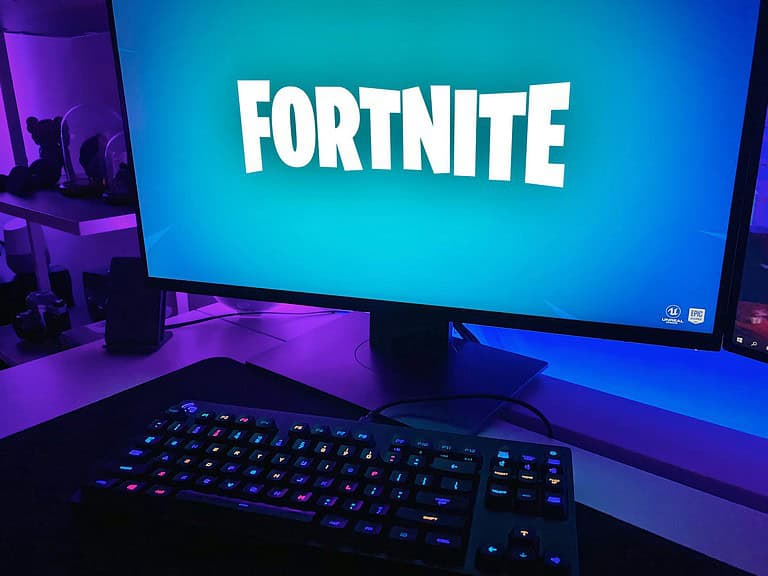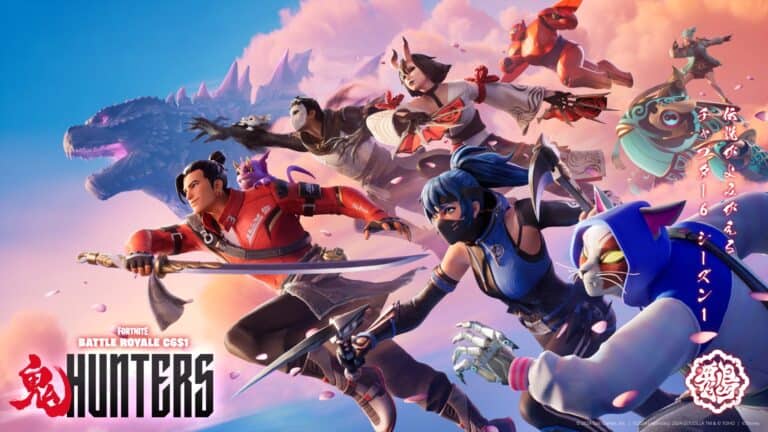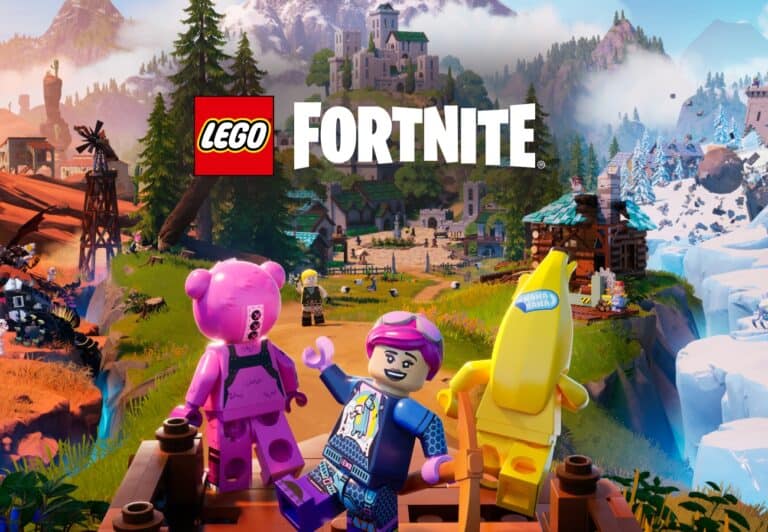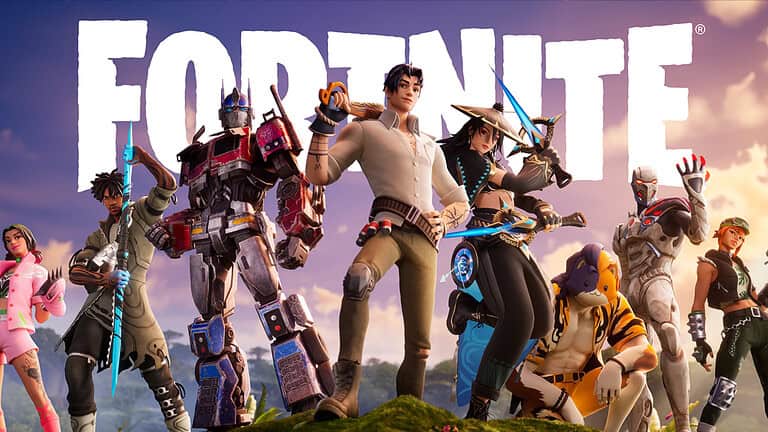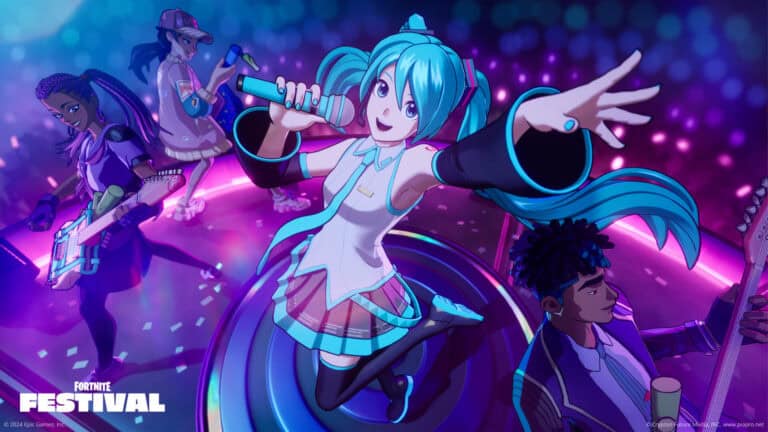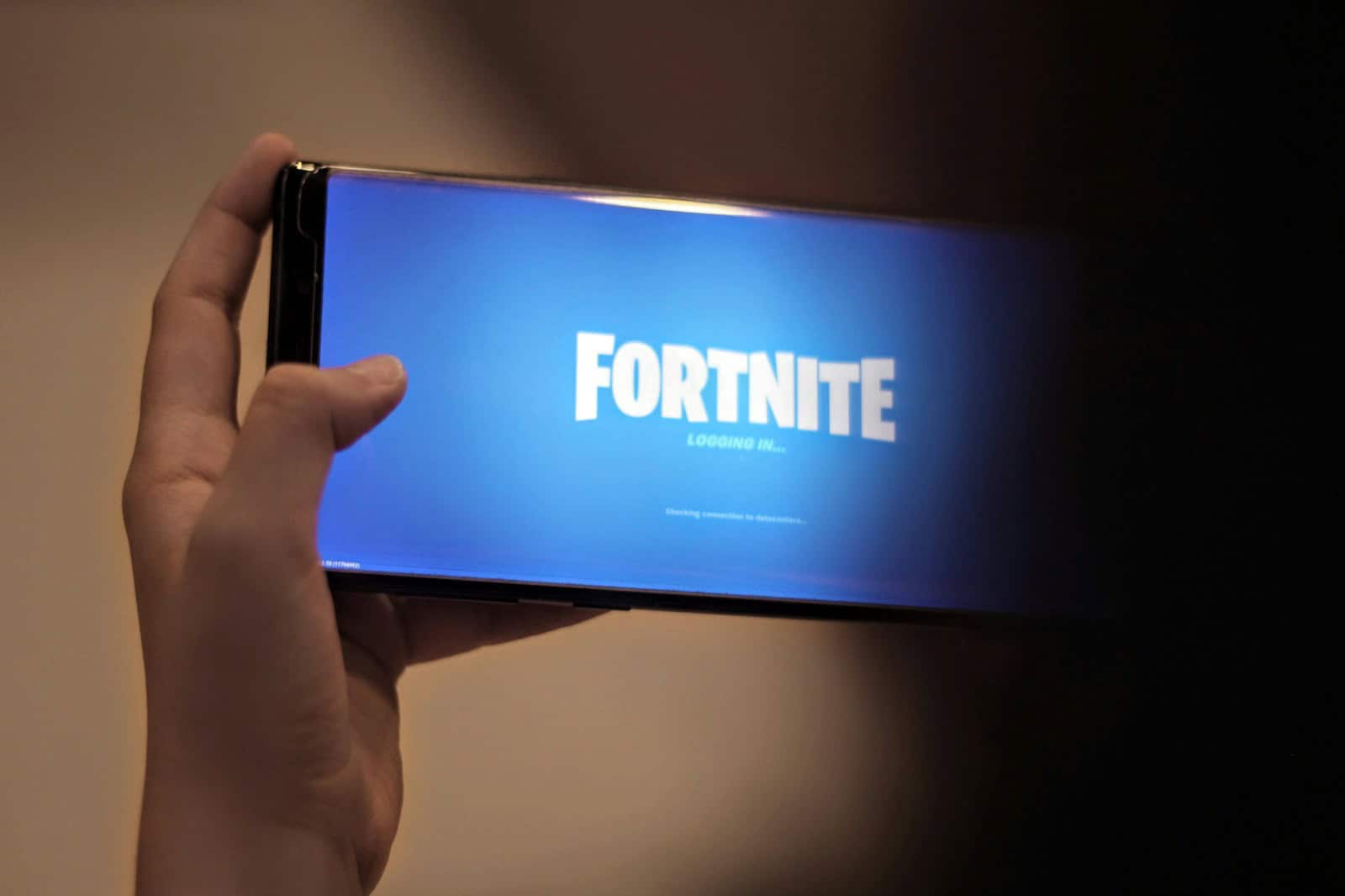
After five years of courtroom showdowns, developer bans, regulatory escalations, and global debates over platform control, Epic Games and Apple have reached a critical resolution: Fortnite has officially returned to the U.S. App Store. The move—greenlit by Apple on May 20, 2025—ends a half-decade standoff that has fundamentally reshaped the mobile ecosystem and marks a historic win for app developers pushing back against digital gatekeepers.
From Defiance to Domino Effect: How the Standoff Began
The rift began in August 2020 when Epic Games, without warning Apple, implemented a direct payment system in Fortnite to bypass the company’s standard 30% App Store fee. Apple swiftly responded by removing the game and revoking Epic’s developer account, triggering a series of lawsuits that would grow into one of the most impactful antitrust cases in tech history.
At the core of the legal conflict was Epic’s claim that Apple’s App Store practices were anti-competitive, monopolistic, and exploitative. What started as a gaming company’s rebellion quickly evolved into a broader movement against closed platforms, inspiring companies like Spotify, Amazon, and Match Group to rally for alternative payment paths and app distribution freedoms.
The Ruling That Cracked the Wall
While Epic’s legal journey was filled with mixed rulings over the years, a pivotal decision came in April 2025. A federal judge ruled that Apple was in “willful violation” of a 2021 injunction requiring it to allow developers to include external payment links or buttons in their apps. Apple had been slow-rolling its compliance, even dragging out Fortnite’s re-approval process after Epic resubmitted the app on May 9.
Following pressure from both Epic’s legal team and a judge who demanded an explanation, Apple relented. On May 20, Apple officially approved Fortnite—and just hours later, it rocketed to #1 on the iOS free games chart.
What Fortnite’s Return Actually Means
This isn’t just a triumphant return of a game; it’s a restructuring of the App Store status quo. Upon relaunch, Fortnite now offers players two distinct payment options: Apple’s default in-app purchase system or Epic’s own checkout interface. Players who opt for the latter receive a 20% “Epic Rewards” bonus—an aggressive incentive designed to nudge users away from Apple’s revenue pipeline.
This approach challenges Apple’s previously untouchable monetization model and opens the door for other developers to follow suit. Major players like Amazon and Spotify have already modified their apps to support out-of-app purchases since the ruling.
Why This Moment Matters Beyond Fortnite
| Key Change | Impact |
|---|---|
| Dual Payment Options | Developers can now offer alternatives to Apple’s IAP system on iOS. |
| Legal Precedent | Establishes enforceable rights for developers to link to external payment platforms. |
| Regulatory Pressure | Reinforces global movements like the EU’s Digital Markets Act, which mandates open platform access. |
| Monetization Shifts | Smaller developers may follow Epic’s lead, reclaiming a larger share of their revenue. |
Apple is currently appealing the court’s ruling and seeking a stay to delay further enforcement. However, the damage to its ironclad control is already done—and the implications for its lucrative services business, which earned nearly $27 billion in Q1 2025 alone, are significant.
Epic’s Broader Comeback Strategy
Beyond legal wins, Epic Games is ensuring Fortnite’s return feels fresh. The timing is no coincidence: the game is currently in the middle of its ambitious “Galactic Battle” Star Wars event.
- Playable characters: Chewbacca, General Grievous, and a recruitable AI-controlled Darth Vader
- Weapons and abilities: Bowcaster, CA-87 Jawa Scatter Blaster, purple and red lightsabers, Force powers
- Vehicles: Fully functional X-Wings and TIE Fighters
- Upcoming drop: Mandalorian skins and NPC allies available May 22
Epic is also evolving its game modes. The 5v5 tactical shooter Fortnite Ballistic now includes features like a dedicated pistol slot, economic tweaks to gadgets, and a new Cinderwatch map. Its rhythm-based Fortnite Festival has added musical mashup gameplay and competitive “Battle Stage” elimination rounds, while its Creative mode is rumored to be getting a Godzilla crossover.
Looking Ahead: What Developers Are Watching Now
Even as Apple mounts its appeal, the momentum has shifted. This case has spotlighted the need for flexible, developer-friendly ecosystems—and Epic’s persistence may have lit the path. Already, Google has faced similar challenges to its Play Store fees, and regulators in countries like South Korea, Japan, and India are drafting laws mirroring the DMA.
The return of Fortnite is a visible symbol of what’s possible when developers push back against restrictive ecosystems. And while it doesn’t end the debate over digital marketplaces, it does give the industry a model for challenging the rules—and winning.
Best Fortnite Seasons: Ranked
Fortnite has captured the hearts of millions of players since its battle royale mode launched in 2017. Each season brings new map changes, weapons, characters, and gameplay mechanics that keep the experience fresh and exciting. Players often debate which season offered the best overall experience.
The best Fortnite season depends on what aspects of the game you value most, whether it’s balanced gameplay, memorable live events, or innovative additions to the battle royale formula. Some players prefer the nostalgia of early seasons, while others appreciate the more refined and feature-rich recent chapters. Your personal gaming style and when you first started playing can significantly influence which season you consider the greatest.
1: Chapter 1 Season 4
Chapter 1 Season 4 holds a special place in many Fortnite players’ hearts. This superhero-themed season introduced the game’s first major crossover event, bringing Marvel characters into the Fortnite universe.
The season launched in May 2018 with a meteor strike that changed the map significantly. You might remember Dusty Depot transforming into Dusty Divot after being hit by the meteor, creating an entirely new play area.
The Battle Pass featured superhero and villain skins that you could customize. These included fan favorites like Omega and Carbide, which had upgradable armor styles you could unlock through gameplay and challenges.
Season 4 introduced hop rocks, a unique consumable that gave you low gravity abilities when used. This new mechanic changed how you could approach fights and traverse the map, adding a fresh dynamic to gameplay.
Many players consider this season one of the best in Fortnite history, particularly for its balanced weapons, engaging storyline, and memorable live event. The rocket launch event at the end of the season was Fortnite’s first major live spectacle.
The introduction of shopping carts as the game’s first vehicle also happened during this season. You could ride them solo or with a friend, adding a new layer of mobility and fun to your matches.
If you played during this time, you likely experienced the perfect blend of gameplay innovation and storytelling that many veterans of the game still reminisce about today.
2: Chapter 2 Season 2
Chapter 2 Season 2 was a standout season in Fortnite’s history. With its “Top Secret” spy theme, this season brought exciting new elements to the game that many players still remember fondly.
The season introduced faction bases across the map where you could find powerful mythic weapons. You could choose between Ghost and Shadow, two opposing spy organizations that shaped the storyline throughout the season.
The Battle Pass featured unique agent skins like Midas, TNTina, and Meowscles. Each skin had special challenges that let you pick between Ghost and Shadow styles, giving you more customization options than previous seasons.
One of the most popular additions was the introduction of NPCs that guarded locations. These AI henchmen and bosses added a PvE element to the battle royale experience that felt fresh and exciting.
Many players consider Chapter 2 Season 2 one of the most iconic seasons in Fortnite history. The combination of unique gameplay mechanics and strong thematic elements made it stand out.
The Deadpool crossover was another highlight, offering you special challenges to unlock the popular Marvel character. This was one of Fortnite’s first major integrations with existing franchises.
Even compared to later seasons, Chapter 2 Season 2 is often ranked as one of the best. The season launched on February 20, 2020, and ran longer than planned due to its popularity and development delays.
3: Chapter 2 Season 6
Chapter 2 Season 6, also known as “Primal,” ran from March 16 to June 8, 2021, lasting a total of 84 days. This season brought a wildlife theme to the island that changed how you played the game.
The season introduced crafting mechanics that let you modify weapons using parts found around the map. You could upgrade your makeshift weapons into either primal or mechanical variants depending on your playstyle preferences.
Many players consider this season to have some of the most creative weapons seen in Fortnite. The primal shotgun, bows with different effect types, and the spire jumpboots added variety to gameplay strategies.
The map underwent significant changes with the addition of several new locations. The Spire became the central point of interest, surrounded by orange-tinted primal areas with wildlife like wolves, boars, and chickens that you could hunt or tame.
The season’s battle pass featured original skins like Agent Jones and Spire Assassin, alongside crossover characters like Lara Croft and Neymar Jr. These collaborations continued Fortnite’s tradition of bringing popular franchises into the game.
Story-wise, the Zero Point crisis continued as Agent Jones called upon The Foundation to contain the unstable energy. This led to the primal theme as reality waves transformed parts of the island into primitive landscapes.
Despite mixed reception in community rankings, Chapter 2 Season 6 stands out for its bold experimentation with gameplay mechanics and environmental storytelling.
4: Chapter 3 Season 1
Chapter 3 Season 1 stands out as one of the most beloved seasons in Fortnite history. Many players consider it a masterpiece in terms of content and gameplay experience.
The season introduced a completely flipped island after the dramatic Chapter 2 finale. You got to explore fresh locations and discover new gameplay elements that breathed life into the battle royale.
One of the biggest highlights was the addition of sliding and tent mechanics. These features changed how you could approach combat and strategy in the game, making movements more dynamic and exciting.
The Spider-Man mythic web-shooters were game-changers. You could swing across the map with incredible mobility, making this season particularly fun for movement enthusiasts.
The weapon pool was well-balanced during this time. You had access to the powerful MK-Seven assault rifle and the shotgun meta felt fair and rewarding for skilled players.
Content updates came consistently throughout the season. You never had to wait long for something new to experience, which kept the gameplay feeling fresh and engaging.
Community feedback shows this season is highly regarded as one of Fortnite’s best. Many players rank it alongside Chapter 1 Season 4 and Chapter 1 Season 7 in terms of quality.
The map changes were particularly notable. Unlike some other seasons, Chapter 3 Season 1 featured constant map updates that evolved the island throughout your playing experience.
5: Chapter 3 Season 2
Chapter 3 Season 2 stands out as one of Fortnite’s most memorable seasons. Running from March 20 to June 4, 2022, this season brought dramatic changes to the game that many players still talk about today.
The season centered around the war between the Imagined Order (IO) and The Seven. This conflict wasn’t just background lore – it actively shaped gameplay with numerous map changes and unique mechanics.
One of the biggest additions was the introduction of Zero Build mode, which removed the building mechanic entirely. This change made the game more accessible to newcomers while offering veterans a fresh challenge.
The season also added exciting mobility features. New parkour mechanics let you sprint, mantle, and shoulder bash through environments. These additions made movement more fluid and opened up new tactical possibilities for you during fights.
Vehicle options expanded with tanks and armored battle buses. These powerful vehicles changed how you could approach combat situations and added a new layer of strategy to matches.
Chapter 3 Season 2 was particularly rich in lore developments, with significant story progression throughout the season. The ongoing conflict brought destruction to parts of the island, creating dynamic battle zones.
Many players consider this season a high point for Fortnite due to its balanced combination of gameplay innovations, story development, and new content. The season successfully refreshed the Fortnite experience while maintaining what made the game special.
6: Chapter 3 Season 4
Chapter 3 Season 4, which ran from September to December 2022, brought a unique chrome-themed experience to Fortnite. The season introduced the fascinating chrome substance that spread across the island, creating an otherworldly environment for players to explore.
Despite being one of the lowest rated Fortnite seasons according to some metrics, many players believe this season was actually underrated and implemented its theme well. The chrome mechanics added fresh gameplay elements that changed how you interacted with the world.
The battle pass offered some memorable characters and cosmetics that many players enjoyed collecting. You could unlock items with a metallic chrome appearance that matched the season’s theme perfectly.
Halloween celebrations during this season were particularly strong. The Fortnitemares event brought spooky content that many fans consider one of the best Halloween events in Fortnite’s history.
The chrome abilities let you phase through walls and turn into a chrome blob to move faster. These mechanics gave you new strategic options during fights and for map traversal.
The season officially concluded in December 2022, ending what some now recognize as an innovative if sometimes overlooked chapter in Fortnite’s evolution. Looking back, the chrome season offered more creativity and fun than it initially received credit for.
7: Invasion
Fortnite Chapter 2, Season 7 brought a whole new dimension to the battlefield with its alien invasion theme. You could experience flying UFOs for the first time, adding a completely new way to navigate and attack your opponents.
The season was extremely well-written, with a storyline that kept players engaged throughout its duration. The alien technology introduced gave you access to futuristic weapons and abilities that changed combat strategy.
Many players consider this season a high point because it followed the more divisive Primal season. It was the perfect way to tear things up after some players expressed disappointment with the previous content.
The gameplay features were truly a blast – both literally and figuratively. You could abduct other players with your UFO or destroy structures from above, creating chaotic and unpredictable battles.
The map changes refreshed familiar locations while adding mysterious crash sites and alien biomes. These changes gave you new places to explore and loot strategies to master.
The battle pass offered some memorable skins including Rick Sanchez from Rick and Morty, Superman, and original alien-themed characters that remain popular today. Your locker likely still contains some favorites from this cosmic season.
8: Flipped
Fortnite Chapter 3 Season 1, known as “Flipped,” marked a dramatic turning point for the battle royale. After the Chapter 2 Season 8 live event, the entire island literally flipped over, giving you a fresh new battlefield to explore.
This season brought major gameplay innovations that changed how you interacted with the game. The addition of sliding and swinging mechanics gave you new movement options, making traversal more dynamic than ever before.
The Spider-Man web-shooters were particularly popular during Flipped. You could swing between buildings and across the map, creating exciting new strategies for both combat and quick escapes.
Flipped also introduced tent mechanics where you could store items between matches. This persistent inventory system added a new layer of strategy to your gameplay decisions.
The weather systems in this season were impressive too. You had to adapt to tornadoes and lightning storms that could either destroy your builds or give you mobility advantages if used cleverly.
Many players consider Flipped one of Fortnite’s greatest seasons due to its fresh start and exciting new mechanics. It successfully kicked off Chapter 3 with substantial changes to keep the game feeling new.
The map itself featured diverse biomes including a desert, tropical areas, and snowy mountains. This variety gave you different combat experiences depending on where you landed.
The season also reintroduced beloved locations in new forms while adding entirely original points of interest for you to discover and master.
9: Primal
Fortnite Chapter 2 Season 6, known as Primal, ran from March 16 to June 8, 2021, lasting 84 days. This season brought a wild transformation to the island with its nature and wildlife theme.
When you dropped into Primal, you discovered a completely changed landscape. The Zero Point explosion created a prehistoric environment where modern structures were replaced by makeshift buildings and primitive weapons.
The crafting system was a major addition during this season. You could collect mechanical parts from cars or animal bones to upgrade your weapons into either mechanical or primal variants.
Wildlife became a key feature of the gameplay. You could hunt animals like wolves, boars, and chickens for resources. Some animals could even be tamed to fight alongside you.
The Spire stood as the central landmark, surrounded by Guardian Towers across the map. These locations offered unique gameplay opportunities and mythic items that could give you an edge in battle.
The season introduced memorable characters like Lara Croft, Raven from DC Comics, and original creations like Tarana and Raz. These NPCs provided quests and sold exotic weapons.
While some players consider Primal one of the best seasons in Fortnite history, opinions vary widely. On social media platforms like TikTok, you’ll find passionate defenders calling it “THE BEST SEASON Of All Time.”
The Primal theme offered a refreshing change from previous seasons, giving you a unique combat experience with its focus on crafting and survival elements.
10: Cubed
Chapter 2 Season 8, also known as Cubed, brought an apocalyptic feel to Fortnite. The gameplay during this season really captured an end-of-days atmosphere that made matches intense and exciting.
The main villain, the Cube Queen, gave this season a memorable antagonist. She commanded the spreading corruption across the island, creating a genuine sense of threat to the Battle Royale map.
This season was very lore-heavy and expanded the Fortnite storyline in meaningful ways. You could feel the narrative tension building throughout the entire season as the cubes spread.
The corrupted areas of the map provided unique gameplay opportunities. These zones changed how you had to approach fights and movement, adding a fresh strategic element to matches.
The season introduced several cube-themed weapons and items that changed up the meta. You could experiment with new loadouts that weren’t available in previous seasons.
Mobility options were plentiful during Cubed. The shadow stones and other movement mechanics let you navigate the changing landscape in creative ways.
The community ratings for this season were generally positive. Many players enjoyed the unique theme and how it set up future storylines.
If you enjoy seasons with strong narratives and environmental changes, Cubed delivered both in spades. The season successfully balanced new content with engaging story elements.
Evolution of Fortnite Seasons
Fortnite’s seasonal structure has transformed dramatically since its battle royale launch, with each season bringing unique themes, map changes, and mechanics that have shaped the game’s identity.
Historical Overview
Fortnite’s journey began with relatively simple seasonal updates in late 2017. The early seasons (1-3) established the foundation with basic Battle Pass systems and gradual map changes.
Season 4 marked a significant turning point with the meteor impact that transformed Dusty Depot into Dusty Divot. This season introduced the first major narrative element to the game.
Seasons 5-7 expanded the storytelling aspect with rifts, the cube (Kevin), and the iconic ice biome. The game’s ambitious direction became clear during this period, which many players consider Fortnite’s golden era.
Chapter 2 brought a complete map overhaul, while Chapter 3 added sliding and mantling mechanics. Recent seasons have incorporated licensed collaborations with Marvel, Star Wars, and other pop culture phenomena.
Impact on Gameplay
Each season has fundamentally altered how you experience Fortnite through new weapons, mobility options, and environmental elements. The introduction of new weapons consistently refreshes the meta, forcing you to adapt your strategies.
Seasonal map changes have been particularly impactful. You’ve witnessed floating islands, volcanoes, futuristic locations, and underwater areas that dramatically change navigation and combat approaches.
Vehicles have evolved from shopping carts to sophisticated cars, boats, and even aircraft. These mobility options have expanded your tactical choices and how you rotate around the map.
The community rates seasons based on these gameplay innovations, with seasons featuring balanced weapons, interesting map changes, and fun mobility options typically ranking highest.
The building and editing mechanics have also evolved, with some seasons emphasizing building skills while others introduced no-build modes to accommodate different playstyles.
Key Features of Notable Seasons
Fortnite seasons have transformed the game through exciting updates that keep players coming back. Each season brings unique elements that change gameplay and offer fresh experiences.
Map Changes
The Fortnite map has undergone dramatic transformations throughout its seasons. Season 4 introduced the first major map change when a meteor crashed into Dusty Depot, transforming it into Dusty Divot. This set a precedent for future map evolutions.
Season 5 brought desert biomes and Paradise Palms, completely changing the southeastern portion of the map. You could find rifts scattered across the landscape that teleported you into the sky for quick rotations.
Season 7’s snow biome added variety with locations like Polar Peak and Frosty Flights. The frozen landscape introduced sliding mechanics that changed how you navigated terrain.
Chapter 2, Season 2 introduced spy bases with unique bosses and mythic weapons. These heavily guarded locations created new hot drops and strategic objectives for you to tackle.
New Skins and Cosmetics
Battle Pass skins have become increasingly elaborate with each season. Season 4 introduced Marvel superhero skins, including Omega and Carbide with customizable styles you could unlock through challenges.
Season 7 debuted wraps, allowing you to customize your weapons and vehicles with different patterns. The Ice King skin became an iconic Battle Pass reward from this winter-themed season.
Season X offered remixed versions of popular skins with the “Best Mates” Battle Pass. You could unlock alternate styles for classic characters through prestige missions.
Chapter 2, Season 2’s spy theme delivered Agent Peely and Midas, with the latter featuring a reactive gold touch ability. This season also introduced built-in emotes that were specific to certain skins, giving your character more personality.
Chapter 3 expanded customization with color schemes and mix-and-match options for certain skins, letting you create truly unique looks for your character.
Frequently Asked Questions
Fortnite seasons have shaped the game’s evolution with distinctive themes, mechanics, and map changes that players remember fondly. Different seasons stand out for various reasons including gameplay innovations, memorable events, and popular battle pass rewards.
Which Fortnite season is considered the peak of the game’s popularity?
Chapter 1 Season 4 is widely regarded as the peak of Fortnite’s popularity. This Marvel-themed season featuring the Avengers crossover brought the game into mainstream culture in mid-2018.
The meteor strike event and the subsequent appearance of Dusty Divot transformed how players viewed live events in games. Player counts reached record numbers during this period as Fortnite became the foundation of the battle royale genre we know today.
Twitch viewership and social media discussion about Fortnite also peaked during this time, cementing the game’s cultural relevance.
What are the main reasons Chapter 2 Season 2 is rated so highly among players?
Chapter 2 Season 2 stands out for its perfect balance of gameplay elements and innovative features. The introduction of mythic weapons and Agency locations created exciting hot-drop zones that refreshed the competitive meta.
The season’s spy theme brought memorable characters like Midas, Skye, and Meowscles, who remain fan favorites. The battle pass rewards from this season are considered among the most unique and desirable.
The end-of-season Device event was spectacular, connecting gameplay directly to the storyline in ways players hadn’t experienced before. Many players also appreciated the extended duration of this season, which allowed more time to enjoy its features.
Can you provide a ranked tier list of Fortnite seasons based on player preferences?
Based on community discussions and player feedback, here’s a general tier ranking of Fortnite seasons:
S-Tier: Chapter 1 Season 4, Chapter 2 Season 2, Chapter 1 Season 7
A-Tier: Chapter 3 Season 2, Chapter 1 Season 5, Chapter 2 Season 4, Chapter 1 Season 3
B-Tier: Chapter 3 Season 1, Chapter 2 Season 6, Chapter 1 Season 6, Chapter 2 Season 3
C-Tier: Chapter 1 Season 8, Chapter 1 Season X, Chapter 2 Season 5, Chapter 3 Season 3
D-Tier: Chapter 1 Season 9, Chapter 2 Season 1, Chapter 2 Season 7, Chapter 2 Season 8
This ranking varies based on player preferences, with Season 7 getting praise for having three biomes and excellent POIs like Tilted Towers and Polar Peak.
In what order were all the Fortnite seasons released?
Fortnite Battle Royale seasons have been released in this chronological order:
Chapter 1: Seasons 1-10 (with Season 10 being called Season X), running from October 2017 to October 2019.
Chapter 2: Seasons 1-8, spanning from October 2019 to December 2021.
Chapter 3: Seasons 1-4, running from December 2021 to December 2022.
Chapter 4: Seasons 1-5, spanning from December 2022 to December 2023.
Chapter 5: Currently ongoing with Season 2 as of March 2025, having started with Season 1 in December 2023.
Each chapter typically introduces a completely new map with seasonal updates bringing gradual changes to locations and gameplay.
Which Fortnite season had the longest duration?
Chapter 2 Season 1 holds the record for the longest Fortnite season, lasting approximately 128 days from October 15, 2019, to February 20, 2020. This extended season gave players plenty of time to explore the entirely new Chapter 2 map.
Chapter 2 Season 2 follows closely as the second-longest season, running for about 118 days due to multiple extensions. These extensions were partially related to development challenges during the early COVID-19 pandemic.
Most standard Fortnite seasons typically last between 70-100 days, allowing players enough time to complete battle pass challenges while keeping content fresh.
What are the most iconic Fortnite skins that have been released?
The Black Knight from Chapter 1 Season 2 remains one of the most respected “OG” skins, representing the earliest days of Fortnite Battle Royale. Its rarity makes it a status symbol among longtime players.
The Reaper (often called “John Wick”) from Chapter 1 Season 3 became instantly iconic and later inspired an official John Wick collaboration. Drift from Chapter 1 Season 5 is beloved for its progressive style upgrades.
Midas from Chapter 2 Season 2 stands out for its unique golden touch feature and central role in the storyline. Peely, first introduced in Season 8, has become Fortnite’s unofficial mascot with numerous variations.
Superhero crossover skins like Iron Man (Chapter 2 Season 4) and Spider-Man (Chapter 3 Season 1) have been extremely popular, showing Epic Games’ success with licensed collaborations.

